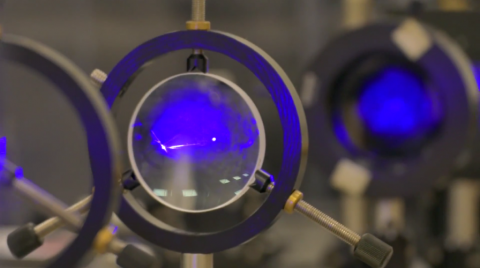One of SUSU’s breakthrough areas of work in the 5-100 program is the program for developing alternative energy sources including the creation of materials for solar batteries (photosensitizers) which can increase the efficiency of solar batters and reduce costs per energy unit received. Representatives of the SUSU Institute of Natural and Hard Sciences introduced this and other areas of research to the International Science Council in their presentation of the “Materials sciences and natural sciences” block.
One of the important topics was the negative effects of industrial businesses on the ecosystem, in particular, on water and soil quality. Doctor of technical sciences, dean of the faculty of material sciences and metallurgical technologies, Gennadiy Mikhailov, noted in his presentation that this problem is especially dire in Karabash. There, during the manufacture of copper, such substances as lead derivatives, arsenic, sulfur, and copper itself are released in large quantities, which accumulate in the human body and in animals. As a result, the city faced a serious ecological problem; heavy pollution of the air and soil, and also of rivers, reservoirs, and groundwater.
The researcher contends that it is possible to clean these resources using mineralization. A special sorbent has already been created at SUSU. Sorbent is a substance that is able to absorb radionucleids and neutralize the harmful effects of heavy metals, turning them into so-called inert minerals that won’t pose a threat to the environment and remain in, for example, water for any period of time like an ordinary river pebble. Sorbent can be used to decontaminate both water and soil. It has already successfully passed testing in experimental conditions within a laboratory, and also in a few real-life situations. Another irrefutable plus of this invention, according to Gennady Georgevich, is its low cost.
However, the presentation wasn’t limited to just discussion about sorbents. The physicists discussed in-depth their achievements in optical high-resolution microscopes and research in dielectric and optical spectroscopes. Further, members of the council got to know about the faculties’ infrastructure, laboratories, and museums of visual physics, where students participate in practical lessons: interesting visual experiments which help show children phenomena of physics in an understandable and visual manner.
“We received good reviews about our research and their breadth,” says dean of the faculty of physics, Nataliya Kundikova, “the convergence of different areas of physics always gives us unexpected results which are helpful in fundamental research and the discovery of new phenomena.”
Guests were especially impressed by the unique laboratory for studying photon crystals. It is built in such a way that the foundation upon which the equipment sits is separated from the university. This allows for experiments to be held independent of the oscillations of the building.
Report from “SUSU-TV”




